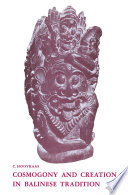Difference between revisions of "Book"
| Line 1: | Line 1: | ||
{{PageSponsor}} | {{PageSponsor}} | ||
{{Book | {{Book | ||
| − | + | |Photograph=20220324T200526547Z076209.jpg | |
| − | |||
| − | |Photograph= | ||
| − | |||
| − | |||
|Information={{Book/Information | |Information={{Book/Information | ||
| − | |Description of information= | + | |Description of information=At birth, according to Balinese belief, the Balinese are in the happy position of having no less than four elder brothers (sisters). The 'concomitants of physical birth', being the amniotic fluid, the blood, the vernix caseosa and the afterbirth together are the baby's kanda empat, his four elder brothers, or her elder sisters in the case of a girl. Though the first three, due to their liquid state, mostly disappear and receive little care, the ari-ari is carefully buried under a round riverstone of about one foot in diameter, for a boy at the one side of the steps leading to the sleeping house, for a girl at the other side. The innumerable writings, partially or completely dealing with the kanda mpat, do not weary from inculcating their readers that the four are helpful as long as one gives them the (material) food and reverential thoughts they are entitled to, in which case they from their side behave as true eIder brothers. If, however, one neglects and ignores them, they punish their younger brother. |
| − | The | + | |Link=www.amazon.com |
| − | |Link= | ||
}} | }} | ||
| − | + | |Subject=rituals, spiritual life | |
| − | |Subject=rituals, | + | |Topic=Folklore, Rituals |
| − | + | |SummaryTopic=Explanation of Kanda Empat, or Four Brothers, who guide you through your life. | |
| − | + | |SummaryTopic id=Penjelasan Kanda Empat, atau Empat Saudara, yang membimbing Anda melalui hidup Anda. | |
| − | |Topic= | ||
| − | |SummaryTopic= | ||
| − | |SummaryTopic id= | ||
}} | }} | ||
Revision as of 20:17, 24 March 2022
- Title
- Original language
- Author(s)
- Illustrator(s)
- Publisher
- ISBN
- —
- Publication date
- Subjects
- rituals
- spiritual life
- Find Book
- Related Env. Initiatives
- Related Places
- Related Biographies
- Related Children's Books
- Related Holidays
- Related Folktales
- Related Comics
- Related Lontar
- Linked words
Description(s)
At birth, according to Balinese belief, the Balinese are in the happy position of having no less than four elder brothers (sisters). The 'concomitants of physical birth', being the amniotic fluid, the blood, the vernix caseosa and the afterbirth together are the baby's kanda empat, his four elder brothers, or her elder sisters in the case of a girl. Though the first three, due to their liquid state, mostly disappear and receive little care, the ari-ari is carefully buried under a round riverstone of about one foot in diameter, for a boy at the one side of the steps leading to the sleeping house, for a girl at the other side. The innumerable writings, partially or completely dealing with the kanda mpat, do not weary from inculcating their readers that the four are helpful as long as one gives them the (material) food and reverential thoughts they are entitled to, in which case they from their side behave as true eIder brothers. If, however, one neglects and ignores them, they punish their younger brother.


Enable comment auto-refresher